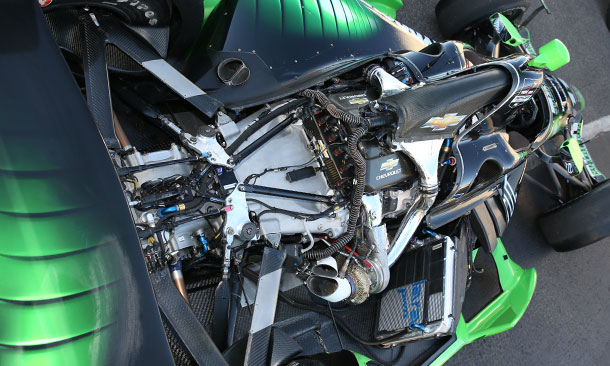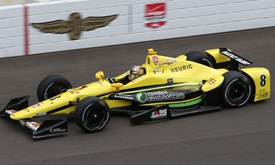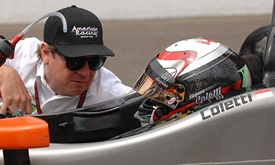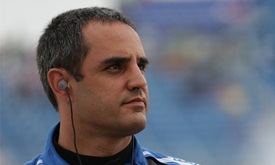Glad you asked: Indy 500 engine program primer
MAY 11, 2015
Both Chevrolet and Honda supply 2.2-liter, twin-turbocharged V-6 engines for their aligned Verizon IndyCar Series teams.
Much like the aerodynamic bodywork platforms designed by both manufacturers and implemented for 2015, there are differences in engine architecture and turbo placement. A primer on the Indianapolis 500 Mile Race engine programs:
Q. What is the life cyle of an engine.
A. Each full-season entrant is allowed four fresh-built engines from the season start until the start of the following season with a corresponding 10,000-mile allotment. An engine must reach the 2,500-mile threshold before being changed without a points reduction. The Indianapolis 500 is an exemption (described below).
Q. How many engines does each entry receive for the Indianapolis 500.
A. Full Indianapolis 500 engine program entrants are provided up to two engines, with one change allowed, according to Rule 16.5.4 of the Verizon IndyCar Series rulebook. Most popular options include fitting the fresh for qualifications May 16-17 or for Carb Day on May 22.
“Last year, a lot of race engines went in for qualifying,” INDYCAR director of engine development Marvin Riley said. “It’s a testament to the reliability of the manufacturers. There is a high confidence that there won’t be a lot of issues.”
Honda has a different plan this year, Honda Performance Development race team leader Allen Miller said.
"The second engine goes in, will run through qualifying is the plan," he said. "That will come out. We'll put in a new engine again for the race. It will just be practice the Monday and Friday before the race, complete the race, then it comes back out, we'll put the second engine back in, mileage it out, back to the third. We want to mileage them out in the order we've built them this year."
Full-season entrants have the choice to use up the changed-out engine or to use up the Indianapolis 500 race engine first in subsequent races. Should the changed-out engine be refitted before the Indianapolis 500 race engine reaches its 2,500-mile change-out threshold, it must remain the car for the balance of its change-out mileage. Both engines must reach their change-out mileage before another engine can be fitted to the car.
Q. What about entries with short Indy 500 engine program.
A. One engine will be provided for practice, qualifications and the race. At the completion of the Indianapolis 500, all miles remaining on the engine will be forfeited.
Q. What type of turbochargers are used.
A. Michigan-based BorgWarner Turbo Systems engineered-for-racing 7163 model that features a mixed-flow turbine blade design, dual ceramic ball bearing cartridges, aluminum bearing housing and stainless steel turbine housing.
Q. What is the turbo boost for the race.
A. The maximum absolute plenum pressure between the turbo compressor exit and the inlet to the engine combustion chambers is restricted to 130 kPa for superspeedway races. From May 15, aka Fast Friday, through the Fast Nine qualifying segment May 17, the boost pressure will be 140 kPa.
Q. What about the pit stop competition.
A. According to Rule 16.5.6.1, manufacturers are free to substitute any engines for assigned engines with INDYCAR approval.
Q. What are some items open for development from a manufacturer’s engine to the next.
A. Piston, rings, valves, valve springs, wastegates, spark plugs, bearing shells and piston squirt jets. Parts homologated before 2015 may be used up to the Indianapolis 500 on May 24.
Q. Are all full-season entries using their second engine.
A. All but the No. 41 ABC Supply Co. AJ Foyt Racing Honda, which should reach the mileage mark in practice May 10.



















